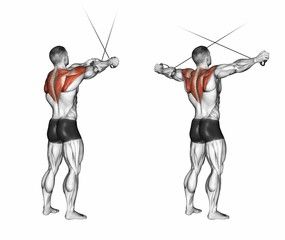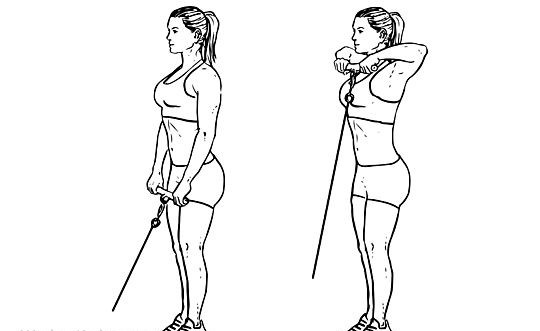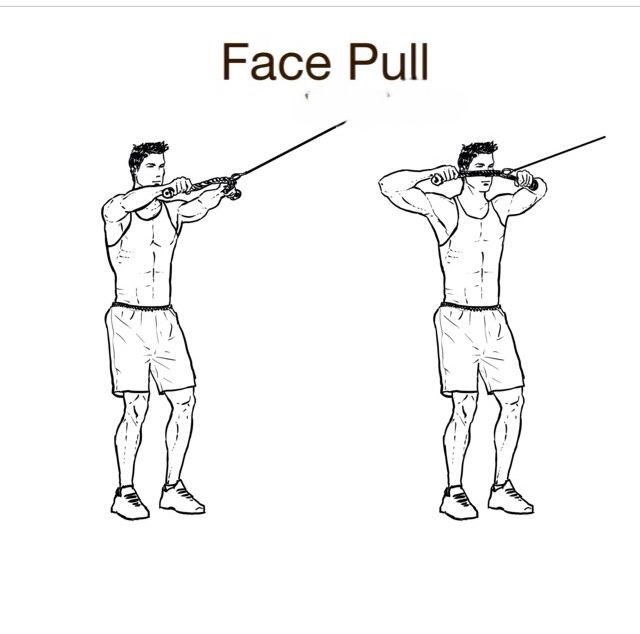Cable Shoulder Workout: The Ultimate Guide to Sculpt Strong, Defined Shoulders
When it comes to building strong, defined shoulders, cable exercises are a game-changer. Unlike free weights, cable machines offer constant tension throughout the entire movement, helping you target the shoulder muscles more effectively. In this guide, we’ll dive deep into everything you need to know about cable shoulder workouts, from understanding the shoulder anatomy to creating a comprehensive workout routine that will take your shoulder gains to the next level.
Understanding Shoulder Anatomy
Before we jump into the exercises, let’s take a quick look at the shoulder muscles. The shoulders, or deltoids, are divided into three main parts: the anterior (front), lateral (side), and posterior (rear) deltoids. Each of these muscles plays a unique role in shoulder movement and stability. To achieve a well-rounded shoulder development, it’s crucial to target all three parts equally.
Benefits of Cable Shoulder Workouts
Why should you consider incorporating cables into your shoulder workout routine? Here are some compelling reasons:
Constant Tension and Muscle Engagement: Cables provide continuous tension on the muscles throughout the range of motion, which helps in maximizing muscle engagement and growth.
Greater Range of Motion and Versatility: Cable machines allow for a greater range of motion and more versatile movements compared to free weights. This versatility means you can hit the shoulder muscles from different angles, leading to better overall development.
Safe and Effective for All Fitness Levels: Cables are generally safer than free weights as they reduce the risk of dropping weights or improper form. They are effective for both beginners and advanced lifters.
Essential Equipment for Cable Shoulder Workouts
To get started, you’ll need access to a cable machine. These are commonly found in most gyms and come with various attachments like rope handles, straight bars, and single handles. Each attachment serves a specific purpose and targets different parts of the shoulder. For example, rope handles are great for face pulls, while straight bars are ideal for upright rows.
Warm-Up Exercises for Shoulder Safety
Warming up before any workout is crucial to prevent injuries, and this is especially true for shoulder workouts. Here are some warm-up exercises to prepare your shoulders:
Arm Circles: Perform small to large circles to increase blood flow.
Internal and External Rotations: Use a light resistance band to activate the rotator cuff muscles.
Dynamic Stretches: Arm swings and shoulder dislocations with a resistance band can help improve mobility.
Top Cable Shoulder Exercises
Here are some of the most effective cable exercises for sculpting strong, defined shoulders:
Cable Front Raise: This exercise targets the anterior deltoids. Stand facing away from the cable machine with a straight bar attached to the low pulley. Raise the bar in front of you to shoulder height, keeping a slight bend in your elbows.

Cable Lateral Raise: Perfect for targeting the lateral deltoids. Stand next to the cable machine with a handle attached to the low pulley. With a slight bend in the elbow, raise your arm to the side until it’s parallel to the floor.

Cable Rear Delt Fly: This exercise focuses on the posterior deltoids. Attach the handles to the upper pulleys, grab them with the opposite hands, and pull the handles out and back in a reverse fly motion.

Cable Upright Row: Great for targeting the front and side deltoids. Stand facing the cable machine with a straight bar attached to a low pulley. Pull the bar up to your chest, keeping your elbows higher than your hands.

Face Pulls: Attach a rope handle to the high pulley. Pull the rope towards your face with your elbows flared out. This exercise is excellent for shoulder health and targeting the rear deltoids.

Cable Shoulder Workout Routine for Beginners
For beginners, it’s important to focus on mastering the form and gradually increasing intensity. Here’s a simple routine:
Cable Front Raise: 3 sets of 12 reps
Cable Lateral Raise: 3 sets of 12 reps
Cable Rear Delt Fly: 3 sets of 15 reps
Face Pulls: 3 sets of 15 reps
Start with a weight that allows you to perform each exercise with proper form and gradually increase as you build strength.
Intermediate to Advanced Cable Shoulder Workout Routine
For more seasoned lifters, combining different exercises can lead to maximal growth. Here’s a routine to try:
Cable Front Raise: 4 sets of 10 reps
Cable Lateral Raise: 4 sets of 10 reps
Cable Rear Delt Fly: 4 sets of 12 reps
Cable Upright Row: 3 sets of 8-10 reps
Incorporate supersets and drop sets to increase intensity and challenge your muscles further.
Common Mistakes in Cable Shoulder Workouts
Avoid these common mistakes to get the most out of your cable shoulder workouts:
Improper Form: Ensure you’re not using too much weight and compromising your form.
Neglecting Different Angles: Make sure to include exercises that target all parts of the deltoid muscles.
Overuse Injuries: Allow sufficient rest between workouts to prevent overuse injuries.
Tips for Maximizing Your Cable Shoulder Workouts
To get the most out of your cable shoulder workouts, consider the following tips:
Mind-Muscle Connection: Focus on feeling the contraction in your shoulder muscles during each rep.
Utilizing Progressive Overload: Gradually increase the weight or reps to continually challenge your muscles.
Integrating with Free Weights: Complement your cable exercises with free weight movements for comprehensive shoulder development.
Recovery and Stretching After Shoulder Workouts
Post-workout recovery is just as important as the workout itself. Stretching helps improve flexibility and prevent injuries. Consider the following stretches:
Cross-Body Shoulder Stretch
Triceps Stretch
Overhead Shoulder Stretch

These stretches help reduce muscle tightness and aid in faster recovery.
Nutrition Tips for Building Strong Shoulders
Building strong shoulders isn’t just about what you do in the gym; nutrition plays a crucial role too. Ensure you’re consuming enough protein to support muscle repair and growth. Include complex carbohydrates and healthy fats in your diet for sustained energy and recovery.
Incorporating Cable Shoulder Workouts Into Your Fitness Routine
To achieve the best results, integrate cable shoulder workouts with other upper body workouts. This can be part of a push-pull-legs split or an upper-lower body split. Make sure you balance your workouts to avoid overtraining any particular muscle group.
Conclusion
Cable shoulder workouts offer an effective way to build strong, defined shoulders by providing constant tension and versatility. By understanding the anatomy of the shoulder and using the proper form, you can target each part of the shoulder effectively. Whether you’re a beginner or an advanced lifter, incorporating cable exercises into your routine can help you achieve your fitness goals. So, start including these exercises in your workout and watch your shoulders grow stronger and more defined!
FAQs
- How often should I do cable shoulder workouts?
It’s recommended to train shoulders twice a week to allow adequate recovery time and prevent overuse injuries.
- Can cable exercises replace free weights?
While cable exercises offer unique benefits, a combination of both cables and free weights will provide the best overall shoulder development.
- What are the best attachments for cable shoulder exercises?
Rope handles, straight bars, and single handles are the most effective attachments for a variety of shoulder exercises.
- How can I avoid shoulder injuries during cable workouts?
Always warm up properly, use weights that you can control, and focus on maintaining proper form throughout each exercise.